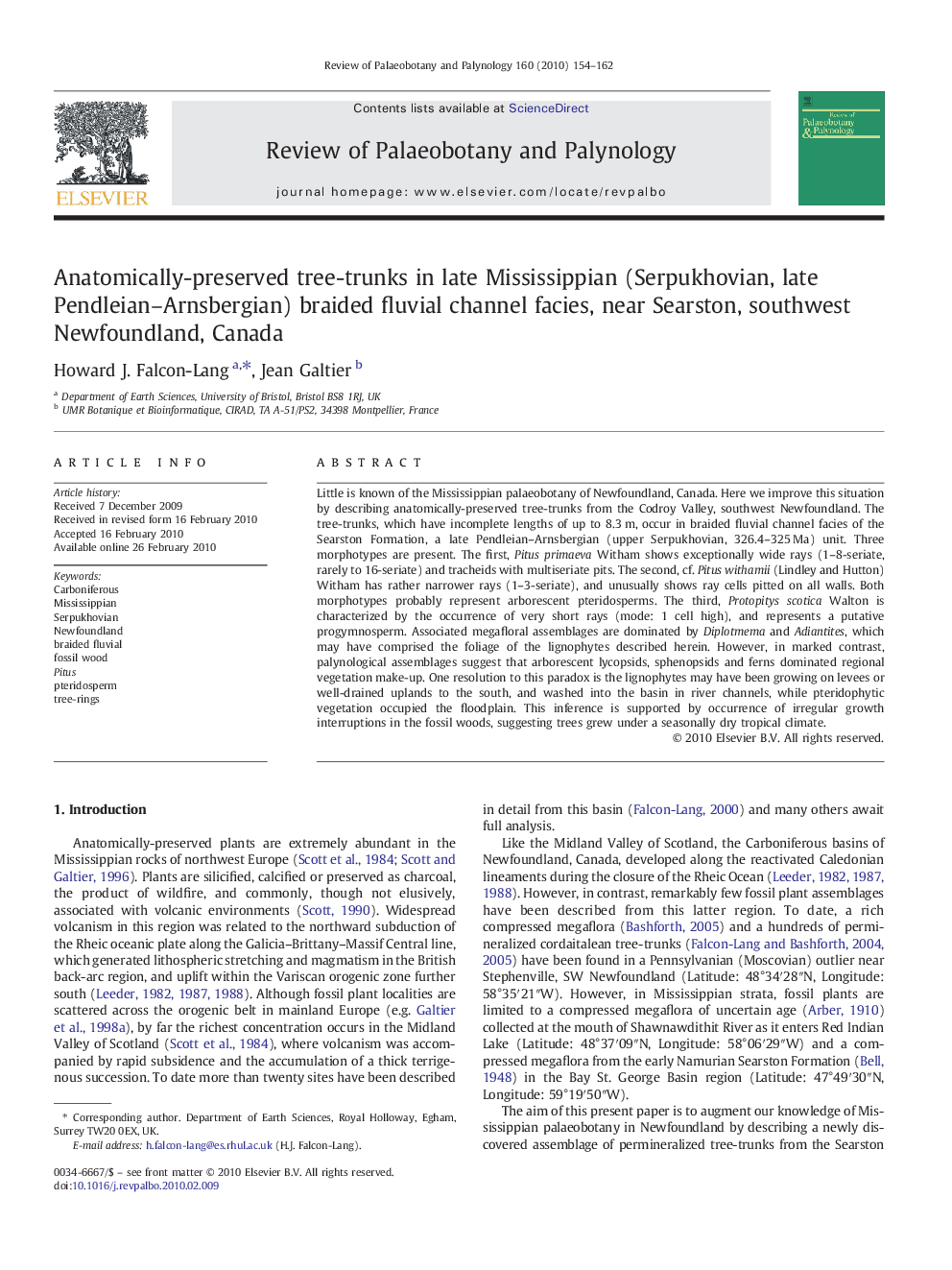| Article ID | Journal | Published Year | Pages | File Type |
|---|---|---|---|---|
| 4750697 | Review of Palaeobotany and Palynology | 2010 | 9 Pages |
Little is known of the Mississippian palaeobotany of Newfoundland, Canada. Here we improve this situation by describing anatomically-preserved tree-trunks from the Codroy Valley, southwest Newfoundland. The tree-trunks, which have incomplete lengths of up to 8.3 m, occur in braided fluvial channel facies of the Searston Formation, a late Pendleian–Arnsbergian (upper Serpukhovian, 326.4–325 Ma) unit. Three morphotypes are present. The first, Pitus primaeva Witham shows exceptionally wide rays (1–8-seriate, rarely to 16-seriate) and tracheids with multiseriate pits. The second, cf. Pitus withamii (Lindley and Hutton) Witham has rather narrower rays (1–3-seriate), and unusually shows ray cells pitted on all walls. Both morphotypes probably represent arborescent pteridosperms. The third, Protopitys scotica Walton is characterized by the occurrence of very short rays (mode: 1 cell high), and represents a putative progymnosperm. Associated megafloral assemblages are dominated by Diplotmema and Adiantites, which may have comprised the foliage of the lignophytes described herein. However, in marked contrast, palynological assemblages suggest that arborescent lycopsids, sphenopsids and ferns dominated regional vegetation make-up. One resolution to this paradox is the lignophytes may have been growing on levees or well-drained uplands to the south, and washed into the basin in river channels, while pteridophytic vegetation occupied the floodplain. This inference is supported by occurrence of irregular growth interruptions in the fossil woods, suggesting trees grew under a seasonally dry tropical climate.
